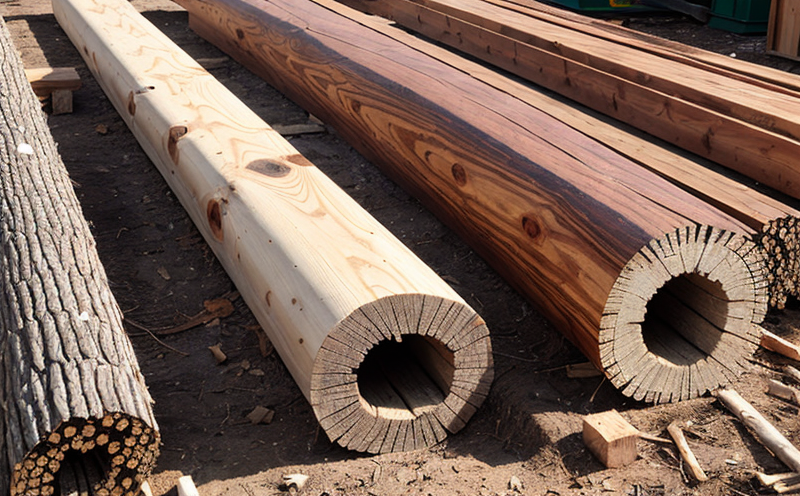Preservative Performance Testing under Temperate Conditions
The demand for wood products in agriculture and forestry is immense. The durability of these structures can significantly impact their service life and overall performance, especially when exposed to environmental stressors such as moisture and temperature fluctuations. Preservative performance testing under temperate conditions plays a crucial role in ensuring that the selected preservatives effectively protect wooden materials from biodegradation.
Preservative testing is vital for compliance with various international standards like ISO 11341, which outlines methods to determine the durability of wood preservatives. In temperate regions, where seasonal changes can be quite pronounced, understanding how a preservative performs under such conditions is essential. This test ensures that any preservative used in agricultural and forestry applications will provide adequate protection against fungi and insects.
The testing process involves exposing treated wood specimens to controlled environmental conditions that mimic temperate climates. These conditions include fluctuations in temperature and humidity levels, which are typical during different seasons. By simulating these real-world scenarios, the test results can predict long-term performance of preservatives. This is particularly important for structures like barns, silos, and other agricultural facilities.
Another critical aspect of this testing is ensuring that the specimens used in the test accurately represent the materials to be treated. This includes using appropriate sample sizes and shapes that reflect actual field use. The specimens are then treated with the preservative according to prescribed methods before being subjected to accelerated aging tests. These tests simulate natural weathering processes but do so much faster, providing results within a matter of weeks rather than years.
The outcome of such testing is not only beneficial for manufacturers who want to ensure their products meet regulatory requirements but also for end-users like farmers and foresters who need reliable information about the longevity and effectiveness of preservatives. Understanding these outcomes helps in making informed decisions regarding material selection, application techniques, and maintenance schedules.
For instance, if a particular preservative shows poor performance under temperate conditions, alternative treatments might be necessary to achieve desired protection levels. Conversely, successful results can lead to increased confidence in using that specific preservative across various applications within the agricultural sector.
Scope and Methodology
| Test Parameters | Description |
|---|---|
| Temperature Range | The test will be conducted at temperatures ranging from 0°C to 35°C, simulating typical seasonal variations in temperate climates. |
| Humidity Levels | Humidity levels will range between 20% and 80%, reflecting relative changes seen during different seasons. |
| Treatment Duration | Specimens are treated with preservative for a minimum of one week following manufacturers' recommendations. |
| Exposure Time | After treatment, specimens will be exposed to the controlled environment for at least six months. |
| Sampling Frequency | Monitoring and sampling occur every two months throughout the exposure period. |
| Data Collection | Measurements include weight loss percentage, fungal growth rates, insect damage levels, and overall structural integrity. |
Why Choose This Test
The Preservative Performance Testing under Temperate Conditions is crucial for several reasons. Firstly, it helps manufacturers comply with stringent international standards such as ISO 11341 and EN 350-1 which specify requirements for wood preservatives used in outdoor structures. Compliance ensures that products meet quality expectations set by regulatory bodies worldwide.
Secondly, this testing provides valuable insights into the effectiveness of different preservatives under specific environmental conditions. For example, certain chemicals may perform well at higher temperatures but less so when exposed to lower ones. Understanding these nuances allows for more precise applications tailored to local climates.
In addition, choosing this test ensures that end-users receive high-quality products capable of enduring harsh weather conditions without compromising on safety or efficacy. Reliable preservative treatments contribute significantly towards extending the lifespan of wooden structures in agriculture and forestry, thereby reducing maintenance costs while enhancing sustainability practices.
Lastly, adopting such rigorous testing protocols fosters innovation within the industry by encouraging continuous improvement in product formulations. By setting high standards early on, companies can stay ahead of competitors, ensuring long-term success in their respective markets.
Quality and Reliability Assurance
- Compliance with International Standards: All tests are conducted according to ISO 11341 and other relevant international standards.
- Expertise of Personnel: Our team comprises highly skilled professionals with extensive experience in wood preservation testing.
- State-of-the-Art Facilities: Equipped with advanced equipment for accurate measurement and observation during the test cycle.
- Continuous Improvement: Regular updates to our procedures ensure adherence to latest industry practices and scientific advancements.





